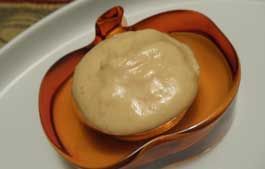What is Kamut?
Kamut is an ancient grain, and it is believed to have been a grain of the Pharaoh’s of Egypt. It is said that Kamut has re-emerged in the world due a few grains having been purchased by a U.S. military person when in Egypt.
Kamut is like a bulgar wheat. It has a wonderful sweet and almost buttery flavor. Kamut has become a new favorite of my boys when cooked in hot cereal form. We buy Kamut Cereal from the Bob’s Red Mill brand and cook according to package directions. I add raisins, chopped apples, dates and walnuts (nuts not recommended for those under 2 yrs. old.). Kamut also makes a great pilaf.
The Goodness of Kamut for Babies
Kamut is a high protein grain, generally containing 30% more protein than wheat. It’s amino acid ratio is about the same as wheat. Kamut is in no way, shape or form a GMO grain. It has not been altered by modern plant breeders, so it retains its ancient nutrition, completely unaltered.
Due to its slightly higher fatty acid content, Kamut can be considered a high energy grain, and compared to wheat, Kamut also contains elevated levels of vitamin E, Thiamin, Riboflavin, phosphorus, magnesium, zinc, pantothenic acid, copper and complex carbohydrates. Kamut is really a wonder grain and extra special since it has never been genetically modified at all.
|
VITAMINS: Contains some other vitamins in small amounts. |
MINERALS: (exact information unavailable at the USDA/Nutrient Analysis Lab. database) Kamut is high in many important minerals. When the USDA/NAL has updated this information, we will post it. |
When can I introduce Kamut to my baby?
Kamut is related to wheat so you may want to introduce Kamut later into your baby’s diet, between 8-10 months of age. Please keep in mind that a family history of wheat allergies would indicate that Kamut be introduced after 12 months old. There are many who say that Kamut is great for those who have a wheat allergy (studies on its gluten have not been found by us). Research by the International Food Allergy Association (IFAA) concluded –
“For most wheat sensitive people, Kamut grain can be an excellent substitute for common wheat.” Dr. Ellen Yoder, President of IFAA and a team of independent scientists and physicians reached this conclusion through their work with two different wheat sensitive populations—those who have immediate immune responses and those with delayed immune responses. In the delayed immune response group, a remarkable 70% showed greater sensitivity to common wheat than Kamut brand grain. In the immediate immune response group—the severely allergic—70% had no, or minor, reaction to Kamut brand wheat. However, those with severe allergies should always seek the advice of a physician.”
Visit Kamut.com to learn more about Kamut and download the study done by IFAA. While many say that Kamut is a great substitute for wheat, we do want to caution you to consult your baby’s pediatrician about introducing it.
How to select and store Kamut for homemade baby food
 The EWG does not rank grains in its “dirty dozen” food list but buying organic kamut is a smart choice whenever possible.
The EWG does not rank grains in its “dirty dozen” food list but buying organic kamut is a smart choice whenever possible.
Kamut is a whole grain and may be stored for several months in a cool dry place. If the temperature becomes extremely warm in your home, you may wish to store the grains in the refrigerator. You can store whole Kamut in a cool dry place but check on the stored Kamut often if you use them infrequently. If you grind Kamut into a flour for cereal, it should be stored in an air tight container and preferably in your refrigerator.
Kamut is a whole grain so it may become rancid without refrigeration. When purchasing any type of milled whole grain, it’s always best to buy smaller quantities to ensure that your whole grains are used prior to them going rancid.
When grains are milled, the natural oils that come from the grain may become rancid without refrigeration. When purchasing any type of milled whole grain, it’s always best to buy smaller quantities to ensure that your whole grains are used prior to them going rancid.
The best way to cook Kamut for Baby Food or Baby Cereal
When cooking the “kamut powder” for homemade baby cereal, use 1/4 cup of powder per 1-2 cups of water – more or less as you see fit. The key is to whisk whisk whisk as you are cooking to avoid clumping. Kamut may also be prepared simply by folllowing the directions on the package; it cooks fast and is simple to prepare as well.
Easy & Nutritious Kamut Baby Food Recipes:
Kamut Baby Cereal (make it Organic by using Organic.)
Ingredients:
- 1 cup Kamut (please note that Kamut grains take longer to cook than stone milled Kamut Cereal.)
- 3 cups water
- 1/2 – 1 teaspoon sea salt (for the big kids!)
Directions:
Step 1: Bring water to a boil and add the Kamut. Stir and reduce heat to low.
Step 2: Simmer Kamut for 1o minutes or longer. Kamut will plump up and some of the grains will look popped when the Kamut is ready.
Kamut Breakfast Cereal
Ingredients:
- 1 cup Kamut – not milled
- 1/2 cup raisins – chopped finely
- 1 tsp.vanilla
- 1 tsp. cinnamon
- maple syrup taste as desired
Directions:
Step 1: Cook according to package directions, adding the raisins and the vanilla and cinnamon. Puree if needed for your baby.
Kamut & Lentils (This is a favorite recipe – we add chicken or sauteed tofu)
Ingredients:
- 4 cups chicken or beef broth
- Salt and black pepper to taste
- 1 cup lentils, washed and drained
- 5 Tbsp. butter
- 1 cup #3 coarse Organic Kamut® Bulgur
- 2 medium onions, sliced lengthwise
Directions:
Step 1: In a heavy saucepan, combine the broth and lentils and bring to a boil over high heat. Lower the heat to moderate and cook, uncovered, 15 to 20 minutes or until the lentils are tender.
Step 2: Add the bulgur and salt and pepper. Bring to a boil, stirring. Reduce the heat to low, cover, and simmer 15 minutes or until the liquid is absorbed and the bulgur is tender. If the liquid is absorbed before the bulgur is done, add a little more hot broth.
Step 3: Meanwhile, in a skillet, melt the butter over moderate heat. Add the onions and sauté until golden brown, stirring frequently.
Step 4: When the pilaf is done, add the onions with the butter and mix well. Cover and let stand in a warm place 5 to 10 minutes.
Visit www.sunnylandmills.com for more yummy Kamut recipes.
Foods Good to Mix With Kamut
- Fruits, vegetables, yogurt and meats are all good foods to add and mix with Kamut and homemade Kamut baby cereals.
![]() Remember, always consult with your pediatrician regarding introducing solid foods to your baby and specifically discuss any foods that may pose allergy risks for your baby.
Remember, always consult with your pediatrician regarding introducing solid foods to your baby and specifically discuss any foods that may pose allergy risks for your baby.
Kamut is related to wheat and while studies show that it may be great for those with a wheat protein allergy, gluten reactions have not been studied.



